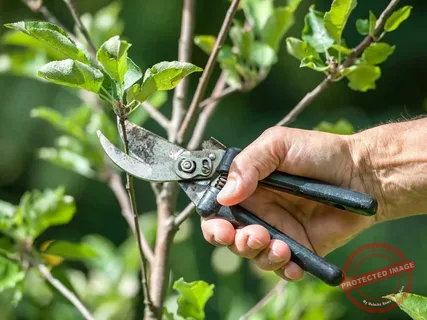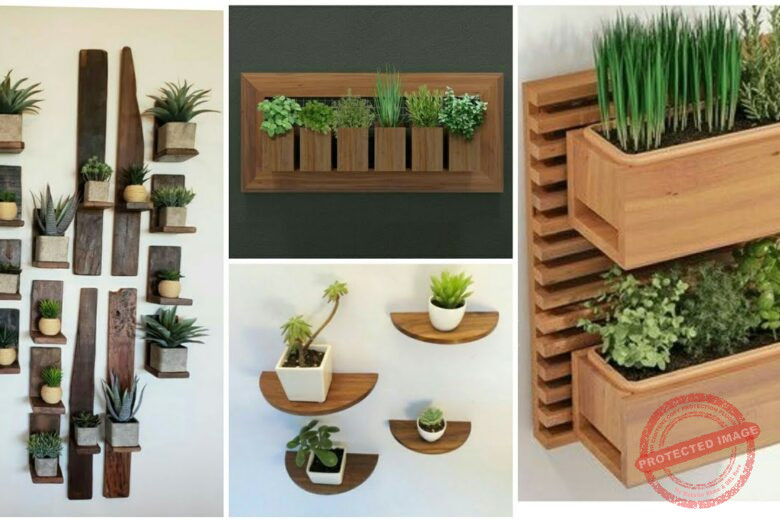If you’re an enthusiastic gardener residing in Zone 8, you’re in for a treat. This temperate climate zone offers an excellent environment for a diverse range of fruit trees that thrive in its conditions. In this article, we’ll explore 20 fast-growing fruit trees that are perfect for Zone 8, bringing not only beauty to your landscape but also an abundance of delectable fruits.
In Zone 8, a temperate climate region, gardeners can enjoy a diverse array of fast-growing fruit trees. From the succulent peaches and crisp apples to the exotic guavas and unique jujubes, these 20 fruit trees thrive in the zone’s conditions. With careful care and attention, these trees bring both beauty and a bountiful harvest of delicious fruits to Zone 8 gardens.
20 Fastest Growing Fruit Trees Zone 8
1. Peach Trees
Latin Name: Prunus persica
Peach trees are known for their deliciously juicy and fuzzy fruits that come in various colors and sizes. They are valued for their fragrant blossoms in spring as well as their tasty summer harvest. Peaches are versatile and can be eaten fresh, added to salads, or used in various recipes.
Care: Plant in well-draining soil with full sun exposure. Regular pruning and thinning of fruits are essential for healthy growth.
Read Also: 30 Fast Growing Vegetables in Winter
2. Apple Trees
Latin Name: Malus domestica
Apple trees are iconic for their crisp, juicy fruits that come in a range of flavors and colors. They offer both culinary and ornamental benefits to your garden. Apples can be enjoyed fresh, used in baking, or turned into delicious homemade cider.
Care: Choose a sunny spot with well-drained soil. Consider cross-pollination for better fruit production.
Read Also: 20 Fast Growing Fruit Trees Zone 6
3. Pear Trees
Latin Name: Pyrus communis
Pear trees produce smooth, sweet fruits with a distinctive shape. They are valued for their elegant appearance and delightful taste. Pears can be eaten fresh, added to desserts, or turned into jams and preserves.
Care: Plant in fertile, well-draining soil with full sun exposure. Pruning helps maintain a healthy shape.
Read Also: How To Grow Onions At Home [Beginners’ Guide]
4. Cherry Trees
Latin Name: Prunus avium
Cherry trees offer not only delicious fruits but also beautiful blossoms. They come in sweet and tart varieties, adding diversity to your garden. Cherries are perfect for snacking, baking, or making flavorful jams.
Care: Choose a location with good air circulation and well-drained soil. Pruning and proper spacing are important.
Read Also: 25 Fast-Growing Fruit Trees Zone 1
5. Plum Trees
Latin Name: Prunus domestica
Plum trees produce sweet and tangy fruits with a smooth skin. They come in various colors and sizes, adding visual interest to your garden. Plums can be enjoyed fresh, dried, or used in cooking and baking.
Care: Plant in a sunny spot with well-drained soil. Regular pruning helps control growth and improve fruit quality.
6. Apricot Trees
Latin Name: Prunus armeniaca
Apricot trees bear small, golden-orange fruits with a deliciously sweet flavor. They are early bloomers, gracing your garden with blossoms in spring. Apricots are perfect for eating fresh, drying, or making jams and preserves.
Care: Choose a location with good air circulation and full sun. Protect blossoms from late frosts.
Read Also: 25 Fast-Growing Fruit Trees Zone 5
7. Fig Trees
Latin Name: Ficus carica
Fig trees bring a Mediterranean touch to your garden. Their unique fruits are enjoyed fresh or dried and have a sweet, honey-like flavor. Figs are delicious when eaten fresh, dried, or added to salads and desserts.
Care: Plant in well-drained soil with full sun exposure. Figs are well-suited for container gardening.
8. Persimmon Trees
Latin Name: Diospyros kaki
Persimmon trees produce vibrant orange fruits with a rich, sweet flavor. They add beauty and taste to your garden. Persimmons can be eaten fresh, added to salads, or used in baking.
Care: Plant in well-drained soil with full sun exposure. Allow fruits to fully ripen before harvesting.
Read Also: 25 Fast Growing Fruit Trees In Zone 9
9. Pomegranate Trees
Latin Name: Punica granatum
Pomegranate trees offer unique, ruby-red fruits filled with juicy arils. They are prized for their health benefits and culinary uses. Pomegranate arils are enjoyed fresh, in juices, or as a garnish.
Care: Plant in well-drained soil with full sun. Prune to maintain shape and improve air circulation.
10. Olive Trees
Latin Name: Olea europaea
Olive trees bring a touch of the Mediterranean to your garden. Their small fruits are processed to produce olive oil. Olives are processed to make olive oil, while some varieties can also be cured and eaten.
Care: Plant in well-drained soil with full sun exposure. Prune to shape the tree and increase air circulation.
Read Also: 21 Fastest Growing Onions [Beginner’s Guide]
11. Mulberry Trees
Latin Name: Morus
Mulberry trees offer sweet and juicy berries that can be enjoyed fresh or turned into jams and desserts. Mulberries are delicious when eaten fresh, added to yogurt, or used in baking.
Care: Plant in well-draining soil with full sun exposure. Prune to shape the tree and encourage air circulation.
12. Pawpaw Trees
Latin Name: Asimina triloba
Pawpaw trees are native to North America and produce custard-like fruits with a tropical flavor. Pawpaws are best enjoyed fresh or used in smoothies and desserts.
Care: Plant in fertile, well-draining soil with partial shade. Protect from strong winds.
13. Quince Trees
Latin Name: Cydonia oblonga
Quince trees produce fragrant fruits used in cooking and preserves. They are known for their distinctive shape and aroma. Quinces are commonly used for making jams, jellies, and quince paste.
Care: Plant in well-drained soil with full sun exposure. Prune to remove dead wood and improve airflow.
14. Kiwi Vines
Latin Name: Actinidia
Kiwi vines produce fuzzy fruits with a tangy-sweet flavor. They are rich in vitamins and add a unique touch to your garden. Kiwis are enjoyed by scooping out the flesh or adding them to fruit salads.
Care: Provide sturdy support for the vines and plant in well-draining soil. Prune to manage growth.
15. Nectarine Trees
Latin Name: Prunus persica var. nucipersica
Nectarine trees are similar to peaches but have smooth skin. They offer a variety of flavors and colors. Nectarines can be enjoyed fresh, grilled, or used in desserts and salsas.
Care: Plant in well-drained soil with full sun exposure. Prune to shape the tree and thin out branches.
16. Crabapple Trees
Latin Name: Malus
Crabapple trees produce small fruits that range in flavor from sweet to tart. They are appreciated for their ornamental value as well. Crabapples can be used to make jams, jellies, and decorative preserves.
Care: Choose a location with good air circulation and well-drained soil. Prune to remove dead wood and shape the tree.
17. Almond Trees
Latin Name: Prunus dulcis
Almond trees produce nutritious nuts encased in hard shells. They are valued for their ornamental blossoms and edible seeds. Almonds can be harvested, shelled, and enjoyed as a healthy snack or used in cooking.
Care: Plant in well-drained soil with full sun exposure. Prune to manage height and improve airflow.
18. Serviceberry Trees
Latin Name: Amelanchier
Serviceberry trees offer delicate white flowers in spring and tasty berries in early summer. Serviceberries can be eaten fresh, added to baked goods, or turned into jams.
Care: Plant in slightly acidic, well-draining soil with full sun to partial shade. Prune to maintain shape and remove dead wood.
19. Guava Trees
Latin Name: Psidium guajava
Guava trees bring a tropical touch to Zone 8 gardens, producing fragrant fruits with a unique flavor. Guavas can be enjoyed fresh, turned into juices, or used in jams and desserts.
Care: Plant in well-draining soil with full sun exposure. Protect from frost during colder months.
20. Jujube Trees
Latin Name: Ziziphus jujuba
Jujube trees produce small, sweet fruits often referred to as “red dates.” They are enjoyed both fresh and dried. Jujubes can be eaten fresh, dried, or used in teas and desserts.
Care: Plant in well-drained soil with full sun exposure. Prune to maintain shape and improve air circulation.
What Fruit Tree Grows Best In Zone 8?
For Zone 8, fruit trees like peaches, plums, and cherries tend to thrive, offering not only delectable fruit but also beautiful blossoms that enhance the local scenery.
Can I grow tropical fruit trees in Zone 8?
While Zone 8 has a temperate climate, some tropical fruits like guavas can thrive with proper protection.
Do these trees require a lot of maintenance?
While different trees have varying care needs, most fruit trees in Zone 8 require regular pruning, watering, and fertilization.
Is cross-pollination necessary for fruit production?
For some fruit trees like apples and pears, cross-pollination enhances fruit set, leading to better yields.
Can I grow these trees in containers?
Many fruit trees can be grown in containers, but it’s essential to choose dwarf or semi-dwarf varieties and provide proper care.
When can I expect to harvest fruits from these trees?
The timing of fruit harvest varies by tree type, but most trees will start producing fruits within a few years of planting.
Conclusion
Incorporating these fast-growing fruit trees into your Zone 8 garden offers not only the joy of gardening but also a bountiful harvest of delicious fruits. With the right care and attention, you can enjoy the beauty and flavors these trees bring to your outdoor space



